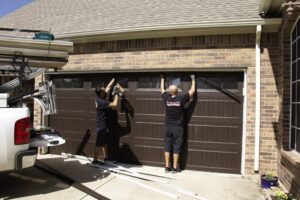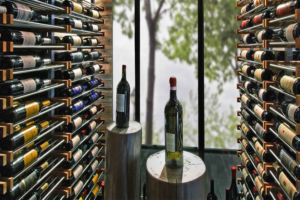Fixing Up a House? Don’t Skip These Safety Must-Haves
Upgrading a home can be exciting—new floors, fresh paint, updated kitchens. But while it’s easy to focus on how things look, there’s another side that matters even more: safety. A good home isn’t just one that looks nice. It’s one that can handle storms, heavy rain, strong winds, and anything else nature decides to throw at it.
Safety upgrades don’t always seem urgent—until something goes wrong. That’s why they’re important to think about early on, especially during home improvements. Here are some of the key things every homeowner should pay attention to if they want to avoid serious problems down the line.
Stop Water Before It Gets In
Water damage is one of the biggest things that can quietly ruin a home. It doesn’t always come from a broken pipe. In many cases, it starts from outside—like rain seeping in through the garage, water pooling around the doors, or drainage systems that aren’t doing their job anymore.
One smart solution is to use Flood Barriers for Homes. These are designed to block water before it gets inside, especially during heavy rain or flooding. They can be set up around doors, windows, or garages and are super helpful if the area around the house doesn’t drain well. Even homes that aren’t right next to rivers or lakes can be at risk—especially during storms or hurricanes.
Taking care of water before it enters the home can stop mold, ruined floors, and long-term structural problems. Once water gets in, the damage adds up fast.
Make Sure the Roof Can Handle the Weather
The roof is one of the most important parts of any house. It keeps out rain, wind, and heat—but only if it’s in good shape. Shingles that are missing, tiles that are cracked, or leaks that never got fixed can lead to serious trouble.
When doing any kind of home upgrade, it’s a good idea to have the roof checked out. That includes the gutters, too. Gutters help move rainwater away from the house. If they’re clogged or broken, water can pool near the foundation and lead to flooding or cracks.
Even just adding gutter guards or extending downspouts to move water farther from the house can make a big difference in preventing damage.
Windows and Doors Aren’t Just for Looks
New windows and doors can make a house look better, sure—but they also play a huge role in keeping it safe. During storms, weak windows can shatter and let wind or rain rush in. Older doors might not seal tightly, making it easier for water or debris to slip through.
Impact-resistant windows and storm-rated doors are designed to hold up during rough weather. They can stop glass from breaking and protect against flying objects during hurricanes or strong storms.
Plus, sealing up gaps around doors and windows can also help with energy efficiency, keeping the house cooler in summer and warmer in winter.
Electrical Upgrades Can Help Prevent Fire
Old wiring isn’t always easy to see, but it can be dangerous. If the home has never had the electrical system updated—or if it’s been decades since anything was checked—it could be a hidden fire risk.
During home renovations, it’s a good time to upgrade outlets, add surge protectors, or have a professional check the wiring behind the walls. This is especially true if new appliances or lighting are being added. Even something small, like a buzzing outlet or flickering light, could be a warning sign.
Safe wiring keeps the whole home running smoothly and lowers the chance of anything overheating or shorting out.
Stronger Foundations Start Outside
Many problems inside the house actually start from outside. If the ground around the house slopes the wrong way, water can run toward the foundation instead of away from it. That causes cracks and can make basements or crawl spaces damp.
Fixing the slope of the yard, adding a drainage system, or putting in a French drain can protect the home’s base. These are simple upgrades that can stop big problems later.
Even something as basic as trimming trees away from the roof can help. Overhanging branches can break during a storm and damage the house.
Fire Safety Isn’t Just About Alarms
Smoke detectors are important—but they’re just part of the picture. During a home upgrade, it’s smart to think about escape routes, where fire extinguishers are placed, and whether the house has working carbon monoxide detectors.
If there’s a fireplace or wood-burning stove, the chimney should be cleaned regularly. Build-up inside can lead to chimney fires. And if the home uses gas appliances, it’s important to have them checked for leaks.
These are all safety steps that are easy to forget when the focus is on style or comfort, but they matter just as much—if not more.
Don’t Forget the Garage or Patio Doors
Garages and patio doors are often the weakest points in the home when it comes to wind and water. During a storm, wind pressure can build up behind a weak garage door and cause major structural damage. Water can also sneak in through the bottom if there’s no proper seal.
Storm-rated doors or flood-resistant panels can fix this. Some people also use water-dam blocks or weather strips to prevent water from getting in during heavy rain.
It’s a small upgrade with a big payoff when the weather turns bad.
What Really Matters
A home should feel safe—not just look good. It should be a place that protects the people inside from water, wind, fire, and anything else that might happen. During renovations, it’s tempting to focus only on new styles or comfort, but skipping over basic protection can lead to bigger problems later.
Good upgrades aren’t always the flashiest ones. Sometimes, it’s the hidden changes—the drainage improvements, the reinforced windows, the water barriers—that make the biggest difference when it counts.
Being prepared doesn’t have to be complicated. It just takes smart choices, one step at a time.


